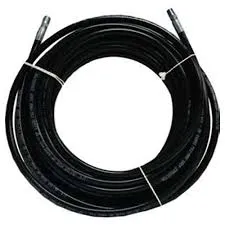134a charging
Understanding R-134a Refrigerant Charging
R-134a, also known as tetrafluoroethane, is a widely used refrigerant in various applications, most notably in automotive air conditioning systems and refrigeration units. As environmental regulations tighten around the use of older refrigerants like R-12, R-134a has become a popular alternative due to its lower ozone depletion potential. Properly charging an air conditioning system with R-134a is essential for achieving optimal performance and efficiency. In this article, we will explore the importance of R-134a charging, the necessary tools, the process involved, and common pitfalls to avoid.
Importance of Proper Charging
Charging an air conditioning system with the correct amount of R-134a is crucial for a variety of reasons. An undercharged system may lead to inadequate cooling, increased energy costs, and excessive wear on the compressor. On the other hand, overcharging can result in elevated pressure levels, potential compressor failure, and even system damage. Therefore, finding the right balance is key to maintaining system efficiency and extending the life of the components involved.
Tools Required for Charging
Before beginning the charging process, it is important to gather the necessary tools. These typically include
1. R-134a Refrigerant Ensure that you have the correct type of refrigerant compatible with your system. 2. Manifold Gauge Set This tool helps you measure the pressure in the system, allowing you to determine whether to add or release coolant.
3. Refrigerant Scale A scale is used to measure the amount of refrigerant that is being added to ensure accurate charging.
4. Vacuum Pump Prior to charging, a vacuum is often pulled on the system to remove moisture and any remaining old refrigerant.
5. Safety Gear Goggles, gloves, and other protective equipment are vital for ensuring safety while handling refrigerants.
The Charging Process
1. Prepare the System Start by turning off the vehicle or appliance and allowing it to sit for a few minutes. This will help stabilize pressures within the system.
134a charging

2. Connect the Manifold Gauges Attach the low-pressure side hose (blue) to the low-pressure service port and the high-pressure side hose (red) to the high-pressure service port.
3. Evacuate the System Before charging, use a vacuum pump to evacuate the system. This step removes moisture and any remaining air, which could compromise the efficiency of the refrigerant.
4. Weigh the Refrigerant Place the canister of R-134a on a refrigerant scale and record its weight. This is essential for determining how much refrigerant is introduced into the system.
5. Charge the System Open the valve on the refrigerant canister while monitoring the manifold gauges. Continue to add refrigerant until the system reaches the manufacturer's specified pressure.
6. Monitor Temperatures As you charge the system, regularly check the outlet temperature. This ensures that the system is cooling adequately.
7. Disconnect and Check for Leaks Once the appropriate amount of refrigerant has been added, disconnect the manifold gauges and check for any leaks around the service ports.
Common Pitfalls to Avoid
While charging a system with R-134a, there are several mistakes that one should strive to avoid
- Ignoring Manufacturer Specifications Always refer to the specific vehicle or appliance manual for the correct refrigerant charge amount and pressure specifications.
- Neglecting System Leaks Before charging, ensure that the system is leak-free. Adding refrigerant to a leaking system is not only ineffective but can also be harmful to the environment.
- Overcharging Keep an eye on the gauges to avoid overloading the system, which can lead to costly repairs.
In conclusion, proper charging of R-134a refrigerant is a crucial process that significantly impacts the efficiency and longevity of refrigerant systems. By following the correct procedures and being mindful of potential pitfalls, technicians can ensure optimal performance, thus contributing to a more sustainable environment and a reliable air conditioning system.
-
Ultimate Spiral Protection for Hoses & CablesNewsJun.26,2025
-
The Ultimate Quick-Connect Solutions for Every NeedNewsJun.26,2025
-
SAE J1401 Brake Hose: Reliable Choice for Safe BrakingNewsJun.26,2025
-
Reliable J2064 A/C Hoses for Real-World Cooling NeedsNewsJun.26,2025
-
Heavy-Duty Sewer Jetting Hoses Built to LastNewsJun.26,2025
-
Fix Power Steering Tube Leaks Fast – Durable & Affordable SolutionNewsJun.26,2025

